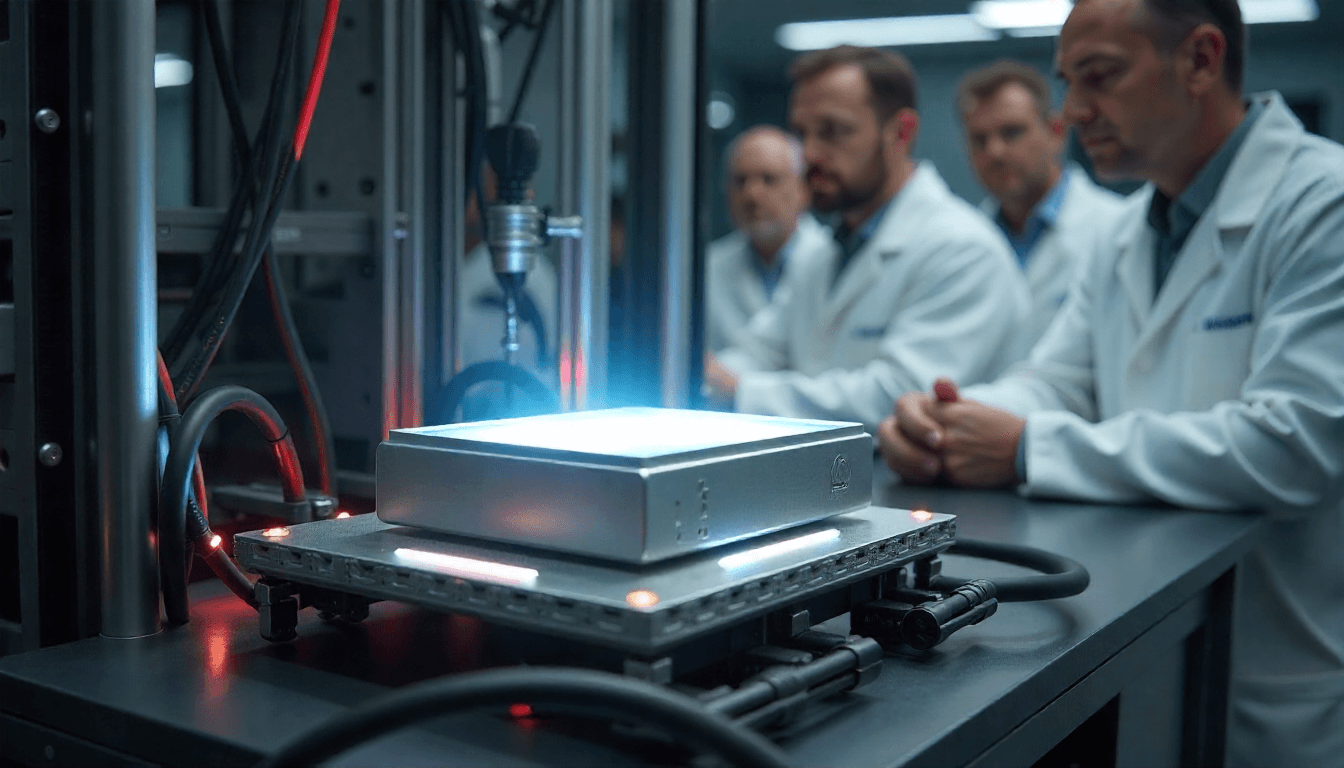The electric vehicle (EV) revolution has gained significant momentum in recent years. Its continued success, however, hinges on a single, critical component: the battery. While current lithium-ion batteries have made EVs a viable option, they are not without limitations. A recent $50M battery tech investment signals a new era of innovation, poised to solve some of the most pressing challenges facing the EV industry. This substantial funding is a true game-changer. It is enabling a strategic focus on next-generation battery technologies that promise to extend range, shorten charging times, and dramatically lower costs, thereby accelerating the mass adoption of electric vehicles and solidifying their role in a sustainable transportation ecosystem. This article examines a major financial transaction (over $50 million) that is powering the future of mobility.
The EV market has seen unprecedented growth, yet consumer adoption still faces significant hurdles. Therefore, range anxiety, long charging times, and high purchase prices are often cited as primary deterrents for prospective buyers. The heart of these issues lies in the limitations of today’s battery technology. Manufacturers are constantly pushing the boundaries of what is possible with current chemistries, but fundamental breakthroughs are necessary to overcome these inherent constraints. This is precisely where targeted investment, like this substantial battery tech investment, plays a vital role. It provides the crucial capital needed to move advanced technologies from the laboratory to mass production. This investment ultimately transforms the theoretical into the tangible.
The Problem with Today’s EV Batteries
Current EV batteries, primarily based on lithium-ion chemistry, have served the industry well. They are powerful, relatively lightweight, and rechargeable, making them suitable for widespread use. Yet, they are approaching their performance limits. Their energy density, which determines the vehicle’s range, is finite. Therefore, to achieve longer ranges, automakers must install larger, heavier, and more expensive battery packs. This adds significant cost and weight to the vehicle. Furthermore, the reliance on materials such as cobalt and nickel presents its own set of challenges. These materials are not only expensive but also subject to supply chain instability and ethical concerns related to their mining.
Also, the liquid electrolytes used in today’s batteries can pose safety risks. While rare, battery fires have been a concern for consumers and manufacturers alike. Finally, the slow degradation of battery capacity over time raises questions about long-term ownership and resale value. All these factors collectively underscore the need for a paradigm shift in battery technology. This is what the $50M battery tech investment is designed to facilitate.
A New Era of Battery Tech Innovation
The $50M battery tech investment has been directed towards “Voltaic Dynamics,” a pioneering company specializing in solid-state and sodium-ion battery solutions. This significant funding, led by a consortium of venture capital firms and major automotive partners, underscores the industry’s collective bet on next-generation technologies. The capital will accelerate the development, scaling, and commercialization of Voltaic Dynamics’ patented technologies. These new innovations promise to solve the core issues plaguing the EV market today. The company’s focus is dual: it is working on a solid-state battery for the premium EV market and a cost-effective sodium-ion battery for entry-level and mass-market vehicles.
This strategic investment will fund the construction of a pilot manufacturing facility. It will also support ongoing research to optimize battery performance and safety. Furthermore, the funds will enable the company to forge strategic partnerships with EV manufacturers. This will integrate its new technologies into future vehicle platforms. This dual-track approach ensures Voltaic Dynamics can address the needs of the entire automotive market. It is making clean transportation a reality for all consumers.
Solid-State Technology: A Leap in Performance
One of the most exciting developments funded by this battery tech investment is solid-state battery technology. Unlike conventional lithium-ion batteries that use a flammable liquid electrolyte, solid-state batteries use a solid electrolyte. This change brings several game-changing advantages. First and foremost, solid-state batteries are inherently safer. They eliminate the risk of thermal runaway and fires associated with liquid electrolytes. This provides peace of mind for both consumers and manufacturers.
Additionally, solid-state batteries promise a far higher energy density. This means they can store significantly more energy in the same volume and weight. This translates directly into a longer driving range, effectively eliminating range anxiety. For example, a vehicle that currently offers 300 miles of range could potentially achieve over 500 miles with a solid-state battery of the same size. These batteries can also charge much faster. This addresses another major consumer pain point. This advancement brings charging times down to minutes rather than hours. These improvements will make EVs just as convenient as internal combustion engine (ICE) vehicles.
Sodium-Ion: A Sustainable and Affordable Alternative
The $50M funding also supports the development of a sodium-ion battery. This is another crucial piece of the puzzle for a sustainable EV future. Sodium is an abundant and low-cost material, unlike lithium, cobalt, and nickel, which are scarce and expensive. This makes sodium-ion batteries significantly cheaper to produce. This is especially important for lowering the overall price of entry-level EVs. The cost of the battery pack is the single most expensive component of an EV. Consequently, reducing this cost makes electric cars far more accessible to the mass market.
While sodium-ion batteries currently have a lower energy density than their lithium-ion counterparts, the technology is rapidly advancing. Voltaic Dynamics is focused on improving its energy density to match or even surpass today’s lithium iron phosphate (LFP) batteries. This makes them a perfect fit for urban EVs, commercial vehicles, and stationary energy storage. This strategic focus ensures that a wider range of consumers can participate in the EV revolution without the burden of high costs.
A Game-Changer for the EV Ecosystem
This significant battery tech investment has far-reaching implications for the entire EV ecosystem. For automakers, it opens the door to creating a new generation of vehicles with superior performance and safety. They can design vehicles that are lighter, more spacious, and more competitively priced. This will attract a new wave of customers. For consumers, the benefits are clear. They can look forward to EVs with a longer range, faster charging, and a lower purchase price. This makes the decision to switch to electric an easy one.
Furthermore, the emphasis on abundant and sustainable materials like sodium will help to de-risk the supply chain. This reduces the industry’s dependence on a few select countries for critical minerals. This will lead to a more stable and resilient manufacturing environment. Ultimately, the $50M battery tech investment is not just about funding a single company. It is a strategic move to unlock the next phase of the electric vehicle revolution, a phase defined by performance, affordability, and sustainability.
Paving the Way for Mass Adoption
The journey toward mass EV adoption is a complex one. It requires more than just innovative technology. It demands a holistic approach that includes robust charging infrastructure, supportive government policies, and, most importantly, consumer confidence. The advancements enabled by this battery tech investment directly address the core concerns that have held consumers back. By offering EVs with longer range and faster charging, manufacturers can alleviate range anxiety. Consequently, this makes electric cars a practical choice for long-distance travel. The development of more affordable battery chemistries will also help close the price gap between EVs and traditional cars. This makes electric cars an economically sound choice for more households.
In essence, this investment is building a foundation of confidence. It assures consumers that the technology is ready, reliable, and sustainable for the long run. It also gives the EV industry a clear path forward. This allows it to move beyond its current limitations and into a future where electric vehicles are the undisputed standard. This transition is crucial for combating climate change and building a cleaner, greener world. The investment in battery technology is a fundamental part of that future.
Conclusion: A Legacy of Innovation
The $50M battery tech investment in Voltaic Dynamics represents a monumental step forward for the electric vehicle industry. It is a powerful signal that the future of mobility is a collaborative one. It is a future where cutting-edge technology and strategic funding work in tandem to overcome complex challenges. From the promise of solid-state technology that delivers unprecedented performance and safety to the affordability and sustainability of sodium-ion batteries, this investment is fueling the innovations that will drive the next wave of EV adoption. This significant transaction is more than a financial deal; it is a legacy of innovation. It is paving the way for a world where clean, efficient, and accessible transportation is not an aspiration, but a reality for all. This investment demonstrates that the key to unlocking the full potential of electric vehicles lies not just in the vehicle itself, but in the power source at its very core.



댓글